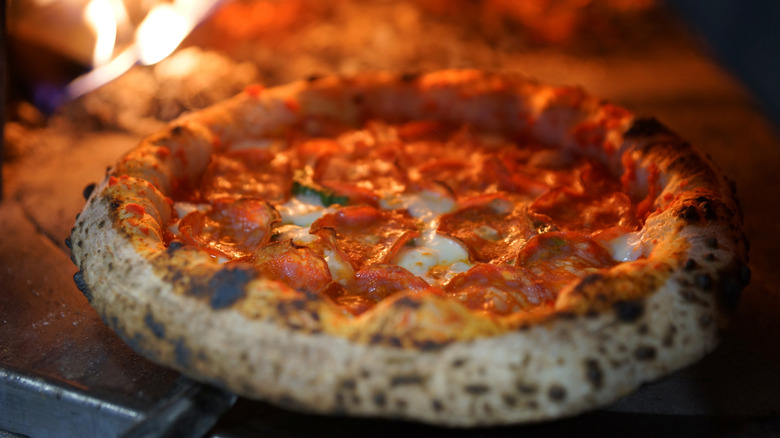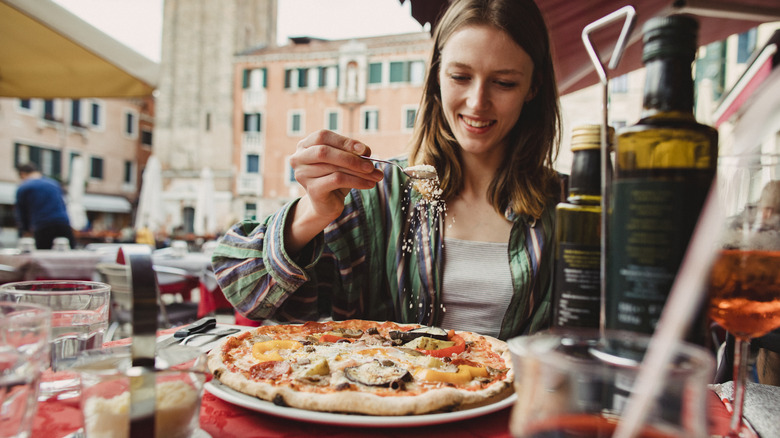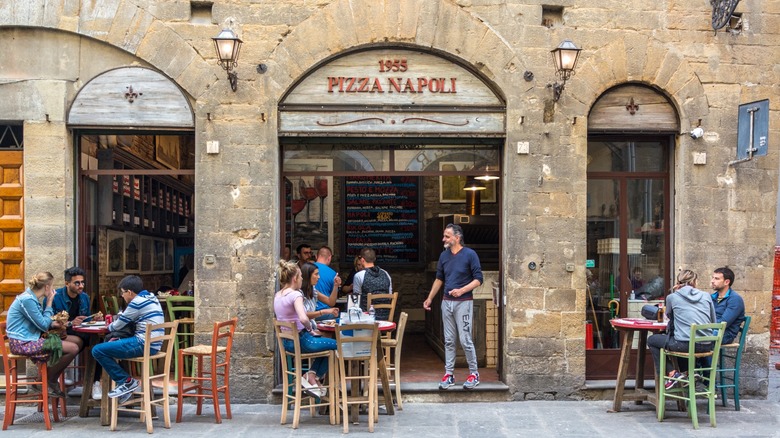Travelers to Italy often have diverse tastes and expectations, especially when it comes to pizza. Some pizza-craving visitors can generally be divided into two broad categories: those who favor plain cheese pizzas and those who prefer pepperoni. Unfortunately, one of these groups will likely face a bitter disappointment when they come to Italy. Hint: the country has no shortage of cheese. That’s right, even if you visit Italy when crowds have dwindled, the beloved pepperoni pizza topping is one you’ll never find in Italy unless you fall into a tourist trap.
How can this be? Pepperoni pizza is a staple in American pizzerias and one of the most popular pizza toppings worldwide! The answer dates back to the late 19th century and a case of a broken telephone between American consumers and Italian immigrants. What essentially happened was that Italian-American cuisine began to take on a life of its own, blending traditional Italian recipes with the bold tastes and preferences of America. The rise of fast-food culture, easy preparation, and spicy, savory flavor made pepperoni an instant hit.
In Italian, “pepperoni” refers to bell peppers, not the spicy salami Americans associate with the term. The Italian word for small, spicy meats is “peperoncino.” See what happened there? Due to language barriers and some creative adaptation, what Italians knew as peperoncino came to be popularly called “pepperoni” in the United States. This led to the birth of the beloved American rendition: pepperoni pizza (and your confusion in Italy).
Alternatives to pepperoni pizza

You’ll look like a total tourist trying to order this food in Italy, and worse, you’ll end up in a tourist trap restaurant rather than the traditional ristorante you probably came for. To avoid this, know thy sausage: American pepperoni is a cured beef and pork meat seasoned with paprika or chili pepper. Its Italian equivalent would be salamino piccante or salsiccia piccante, a spicy sausage or spicy salami. Spicier toppings, like these cured meats akin to pepperoni, are more prevalent in Italy’s southern regions.
In Italy, the importance of regional variation goes beyond architecture, dialect, and weather to pizza, too! There are so many options out there. In the coastal areas of Italy, like Naples, you can find the famous pizza ai frutti di mare, a tomato-sauce pizza topped with seafood with no cheese. If you haven’t tried it, you haven’t lived (unless you have a seafood allergy).
Or perhaps you’re traveling north towards Liguria, where pizza toppings are more inventive than mere cheese and pepperoni. Here, you can eat a 700-year-old recipe of piscialandrea, a focaccia pizza. Its ingredients include taggiasche olives, anchovies, garlic, oregano, and olive oil on a bed of tomato sauce. However, not all of us are so adventurous. So, if you’re looking for pepperoni but don’t want to come off as touristy, opt for pizza diavola (devilish pizza). This pizza, topped with spicy salami, is native to the Campania region, and it’s as close as you can get to the American pepperoni pizza.
Are tourist traps that bad, and how do you spot them?

The quest for an authentic culinary experience means avoiding restaurants that cater primarily to tourists. These places tend to sacrifice the quality and authenticity of Italian cuisine to appeal to the tastes of international visitors, like putting pepperoni on pizza instead of the traditional salamino or salsiccia. The best way to avoid a tourist trap is to identify it beforehand; using your ears is one way. Do you hear international languages being spoken, or is it Italian? If most diners are speaking Italian, chances are you’re in the right place.
Another surefire strategy to sidestep tourist traps is to venture far away from famous landmarks. If it’s right across the Trevi Fountain, it’s been put there for you — much like a mousetrap designed for mice, only this time pepperoni is the bait instead of cheese. If the pizzeria is in a tourist-heavy area and you are invited in, kindly reject it and move on.
However, this can be difficult, especially when you hungry (or worse, hangry). If you have already sat down, quickly scan over the menu. Is it laminated? Are there multiple languages on it? Photos of the pizza? If yes to all of these, run! To experience the real essence of Italian pizza, one must venture beyond the pepperoni and explore the variety of toppings and styles Italy offers. This is because, in Italy, pizza is not just food; it’s a culture, a 1,000-year-old history, and a lifestyle.

